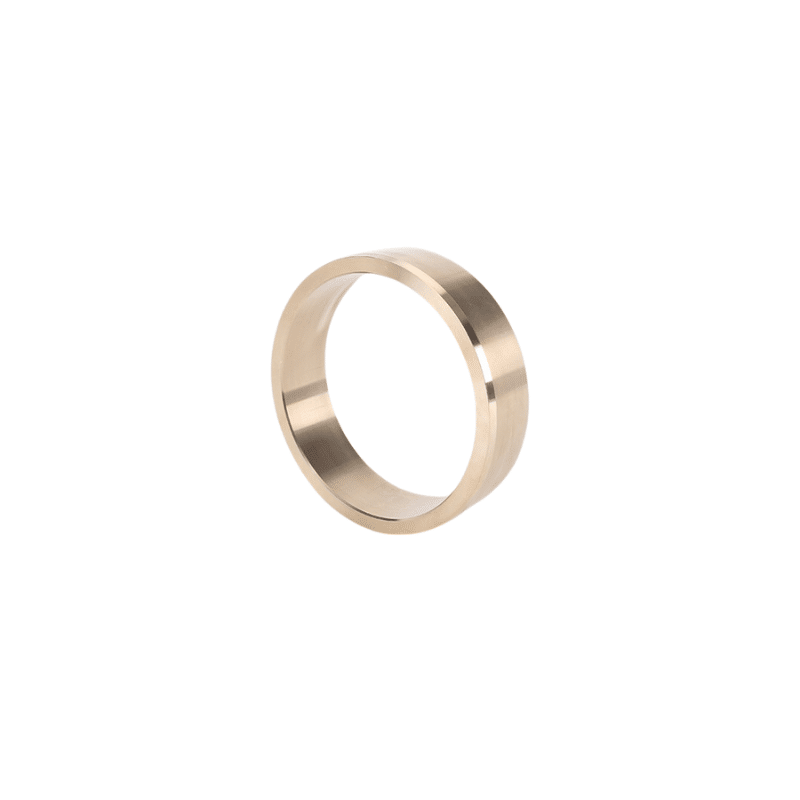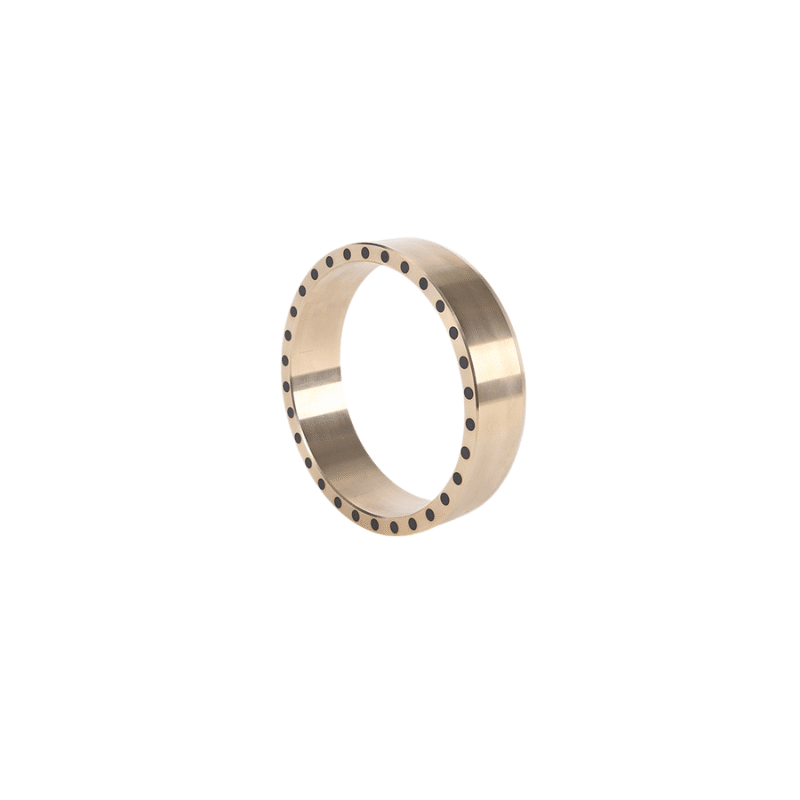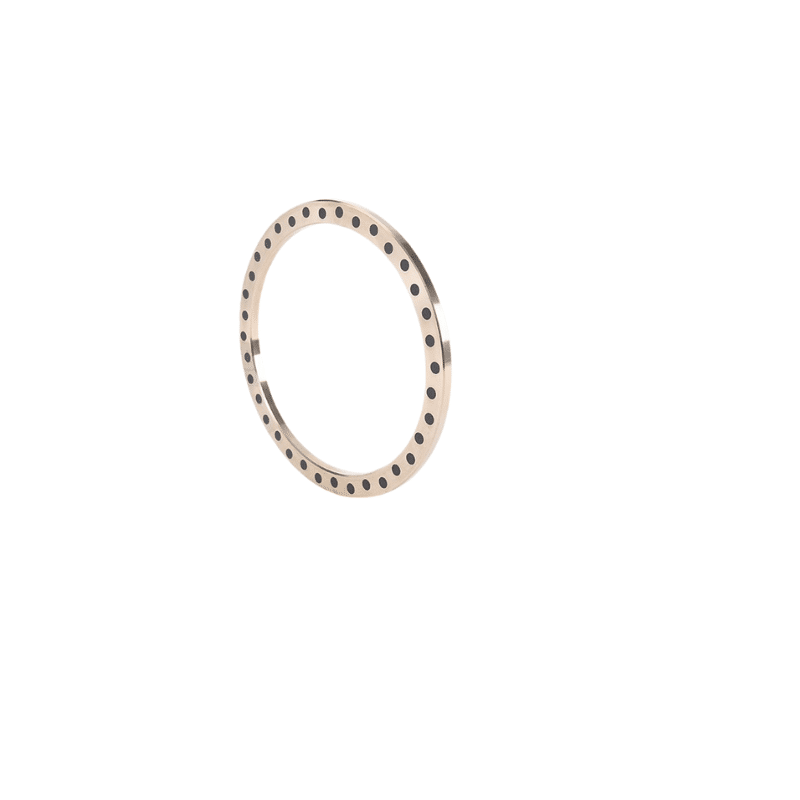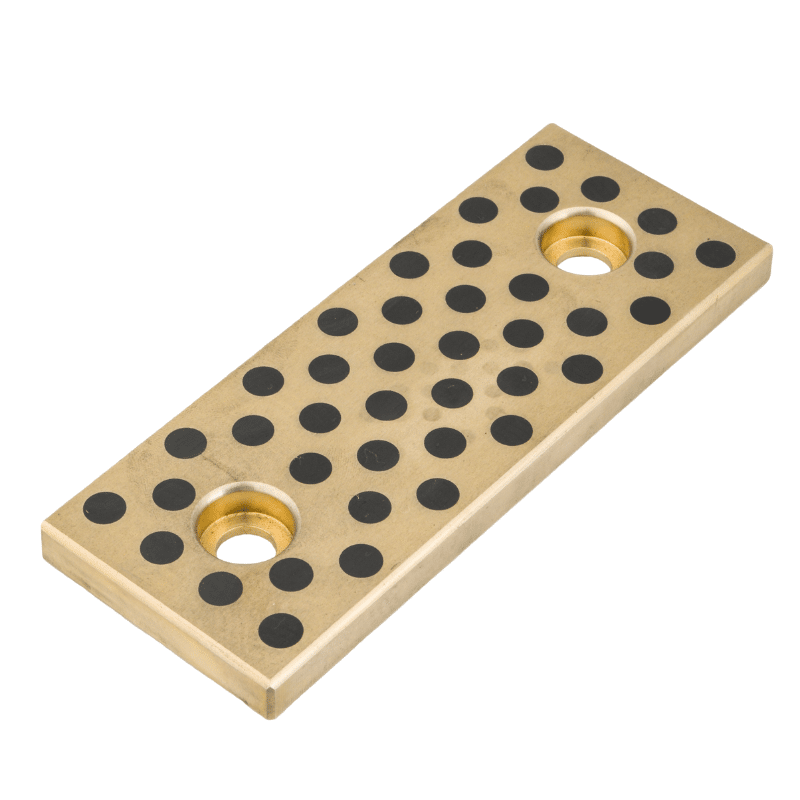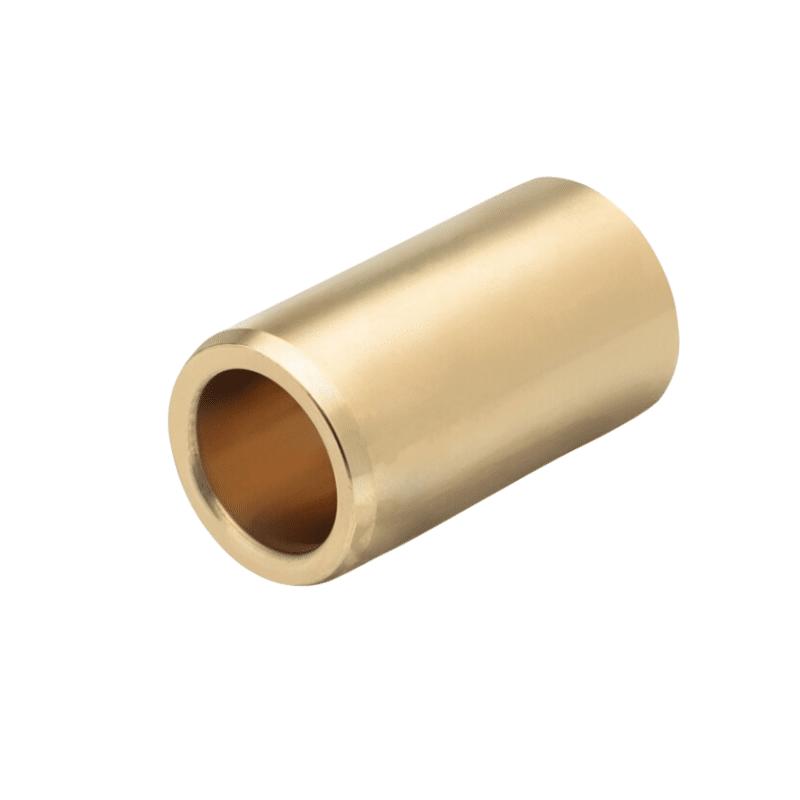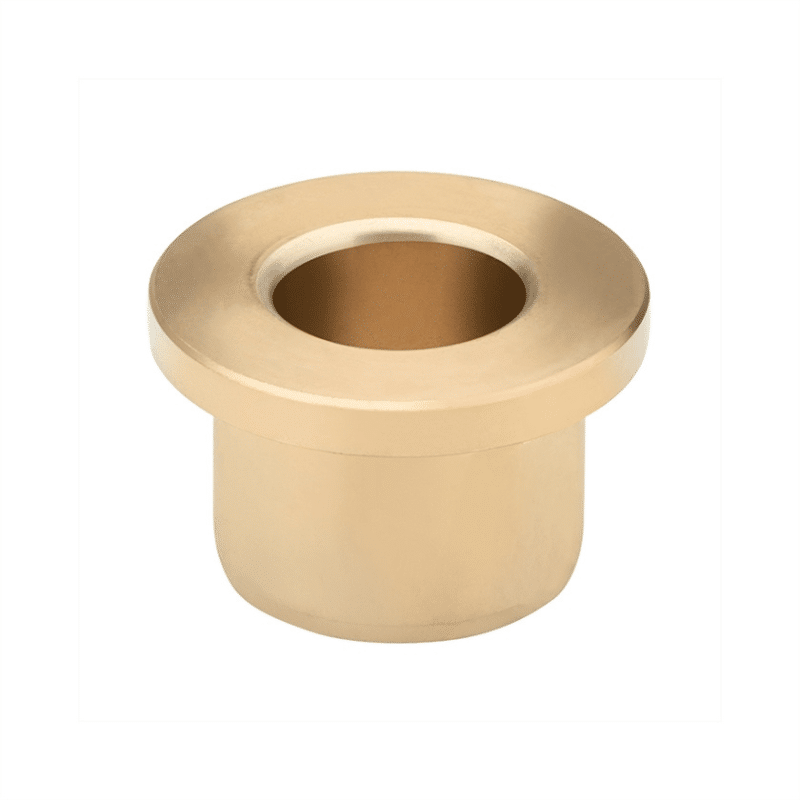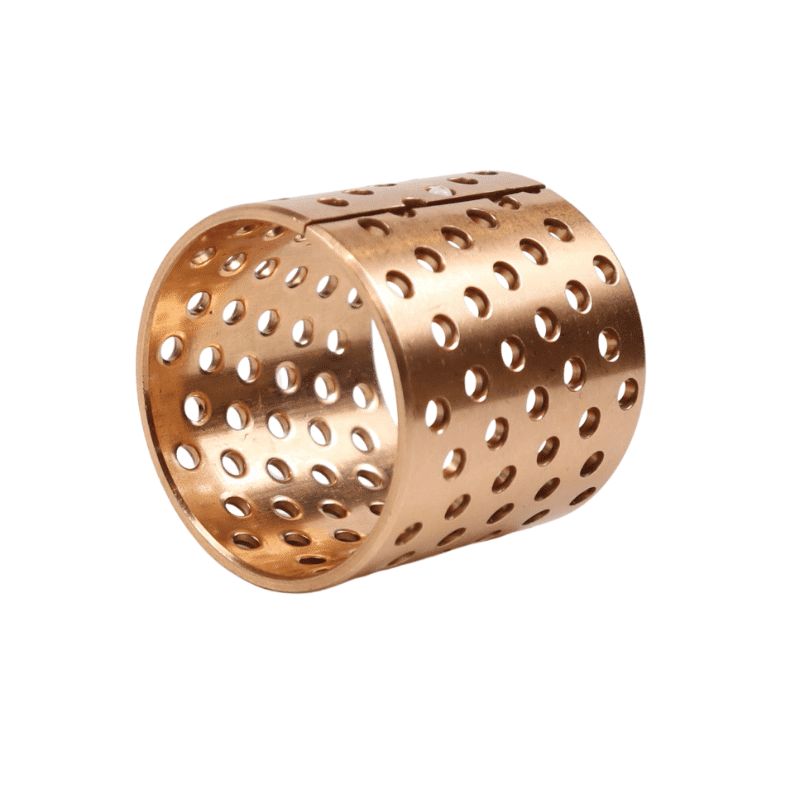QAL9-4 Brass Bushing
QAL9-4 Brass Bushing
Say goodbye to the hassle of frequent lubrication maintenance. Our self-lubricating technology ensures smooth operation and reduces wear and tear, extending the lifespan of your equipment. Experience uninterrupted productivity and cost savings as you bid farewell to the need for messy lubricants and time-consuming upkeep.
Manufacturing on Demand, alternative solutions
QAL9-4 Brass Bushing
QAL9-4 brass bushings offer a combination of strength, corrosion resistance, and lubricity that makes them an excellent choice for a wide range of applications. QAL9-4 Cast Bronze Bushings ZCuAl9Fe4 Copper Gear Parts!
QAL9-4 Brass bushing is a self-lubricating bearing material that combines strength, corrosion resistance and lubricity, making it ideal for a variety of applications. QAL9-4 is a copper alloy commonly used in the manufacture of bushings because of its favorable combination of mechanical properties and corrosion resistance. The name “QAL” usually refers to a class of alloys containing copper (Cu), aluminum (Al), and lead (Pb), with numbers indicating approximate percentages of these elements. In the case of QAL9-4, it implies about 9% aluminum and 4% lead content.
The QAL9-4 brass bushing with graphite is a self-lubricating bearing that uses graphite to enhance performance. QAL9-4 brass is known for its mechanical properties and corrosion resistance, and adding graphite improves wear resistance and reduces the need for external lubrication.
Advantages:
- Self-Lubricating: Graphite reduces friction and wear, ideal for hard-to-lubricate applications.
- Increased Wear Resistance: Graphite enhances durability and extends service life.
- Reduced Friction: Graphite minimizes friction for smoother operation and lower energy use.
- Operational Efficiency: Suitable for high temperatures, high pressures, and corrosive environments.
- Versatility: Used in automotive, industrial, heavy equipment, and marine applications for high performance and low maintenance.
Manufacturing Process:
- Material Preparation: Combine QAL9-4 brass alloy with graphite particles.
- Mixing: Ensure even distribution of graphite in the alloy.
- Casting or Forging: Shape the mixture into bushings.
- Heat Treatment: Improve mechanical properties and stabilize graphite.
- Finishing: Machine to precise dimensions and add features like flanges or grooves.
The combination of QAL9-4 brass and graphite provides a reliable, efficient solution for low-friction, high-wear-resistance applications without regular lubrication. These bushings are available in various sizes and configurations to meet specific needs
QAL9-4 Brass BushingBearing, Self-lubricating
QAL9-4 is a type of brass alloy, often used in the manufacturing of bushings due to its favorable combination of mechanical properties and corrosion resistance. The “QAL” designation typically refers to a general category of alloys that contain copper (Cu), aluminum (Al), and lead (Pb), with the numbers indicating the approximate percentages of these elements. In the case of QAL9-4, it suggests approximately 9% aluminum and 4% lead content.
Properties of QAL9-4 Brass
- Good Corrosion Resistance: QAL9-4 brass has good resistance to corrosion, making it suitable for use in environments where exposure to moisture, chemicals, or saltwater is common.
- High Strength and Hardness: The aluminum in the alloy increases the strength and hardness, which is beneficial for bushings that need to withstand heavy loads and abrasive conditions.
- Lead Content for Lubricity: The lead content in QAL9-4 brass improves its lubricity, which is essential for bushings to minimize friction and wear between moving parts.
- Machinability: QAL9-4 brass is known for its good machinability, allowing for the production of bushings with precise dimensions and finishes.
Applications of QAL9-4 Brass Bushings
QAL9-4 brass bushings are used in a variety of applications due to their durability and performance characteristics:
- Automotive Industry: In the manufacturing of bearings, gears, and other components that require high strength and wear resistance.
- Marine Applications: For equipment that is exposed to saltwater and corrosive environments, such as propeller shafts and other moving parts.
- Industrial Machinery: In pumps, compressors, and other machinery where components need to operate smoothly under load.
- Construction and Infrastructure: For bearings in heavy equipment and structural components that must withstand harsh conditions.
Manufacturing Process
QAL9-4 brass bushings can be manufactured using various methods, including:
- Casting: The alloy is melted and poured into molds to create the desired shape of the bushing.
- Forging: The alloy is heated and shaped by applying force, which can improve the grain structure and mechanical properties.
- Machining: The alloy is cut and shaped using tools and equipment to achieve the required dimensions and tolerances.
QAL9-4 brass bushings
QAL9-4 brass bushings offer a combination of strength, corrosion resistance, and lubricity that makes them an excellent choice for a wide range of applications. The alloy’s properties, coupled with its good machinability, allow for the production of high-quality bushings that can withstand the demands of various industries. Whether used in the automotive sector, marine environments, or industrial machinery, QAL9-4 brass bushings provide reliable performance and long service life.

The closest alloys to QAL9-4 in terms of ASTM B505 and European Standard EN 1982
QAL9-4 brass bushings with graphite are a type of self-lubricating bearings that incorporate graphite as a lubricant to enhance their performance under various operating conditions. The QAL9-4 brass alloy itself is known for its good mechanical properties and corrosion resistance, but the addition of graphite further improves its wear resistance and reduces the need for external lubrication.
Benefits of Graphite in QAL9-4 Brass Bushings
Self-Lubrication: Graphite particles embedded in the brass matrix provide a dry lubricant that reduces friction and wear, especially in applications where lubrication may not be readily available or where frequent lubrication is undesirable or impractical.
Improved Wear Resistance: The presence of graphite increases the bearing’s ability to withstand wear, extending the service life and reducing the need for maintenance or replacement.
Reduced Friction: Graphite is known for its excellent lubricating properties, which help to minimize friction between moving parts, leading to smoother operation and reduced energy consumption.
Operational Efficiency: The self-lubricating nature of graphite-embedded bushings allows for more efficient operation in environments where high temperatures, high pressures, or corrosive substances are present.
Versatility: These bushings can be used in a wide range of applications, from automotive and industrial machinery to heavy equipment and marine engineering, where high performance and low maintenance are required.
The closest alloys to QAL9-4 in terms of ASTM B505 and European Standard EN 1982, we first need to clarify what QAL9-4 refers to in the context of alloy standards.
QAL9-4 is a designation commonly used in China for a copper-aluminum alloy, also known as Aluminum Bronze. This alloy typically contains about 9% aluminum and 4% iron, with the rest being primarily copper. It’s known for its high strength and excellent corrosion resistance, particularly in marine environments.
For ASTM B505, a similar aluminum bronze alloy would likely be one of the C95400 series, which are aluminum bronzes with approximately 9% aluminum. These alloys are known for their high strength and resistance to wear and corrosion.
For EN 1982, the closest equivalent might be the CC333G alloy, which is an aluminum bronze with a similar composition. This European standard specifies aluminum bronze with high tensile strength and good resistance to corrosion and wear.
Here’s a simplified overview:
| Alloy Specification | Alloy Name | Description |
|---|---|---|
| ASTM B505 | C95400 | An aluminum bronze alloy, known for high strength and excellent corrosion resistance, typically used in heavy-duty applications. |
| EN 1982 | CC333G | An aluminum bronze similar to QAL9-4, offering high strength, excellent wear and corrosion resistance, suitable for similar applications as ASTM C95400. |
These specifications are based on the general characteristics of QAL9-4 and might include slight variations in minor alloying elements that tailor the material properties for specific applications.
Your expert in self-lubricating Bearing
and Bronze alloys – serving globally
Brand replacement products and functionally equivalent parts, alternative solutions
Manufactures flange bronze bearings, service & maintenance companies to meet the exacting specifications required in a wide range of industrial applications.
Machined bronze bushing that meet the exacting requirements & specifications supplied by our clients. Spherical bearings, spindles, semi-spheres and supports that we have manufactured.
You will find to follow a selection of self lubricating bronze bearing material CuSn7Zn4Pb7, CuSn12, CuAl10Fe5Ni5,
CuZn25Al5Mn4Fe3
Alternative solution,We offer an outsourced machining service for bronze bushes, manufacturing precise parts to the designs supplied to us by our clients.
Selection of other composite bushing material of self lubricating bearing that we have manufactured.
Wrapped Bronze Sleeve Bearing, Are you interested in our products?
Manufacturer of bimetal and steel bronze bushing parts according to client’s drawing.

